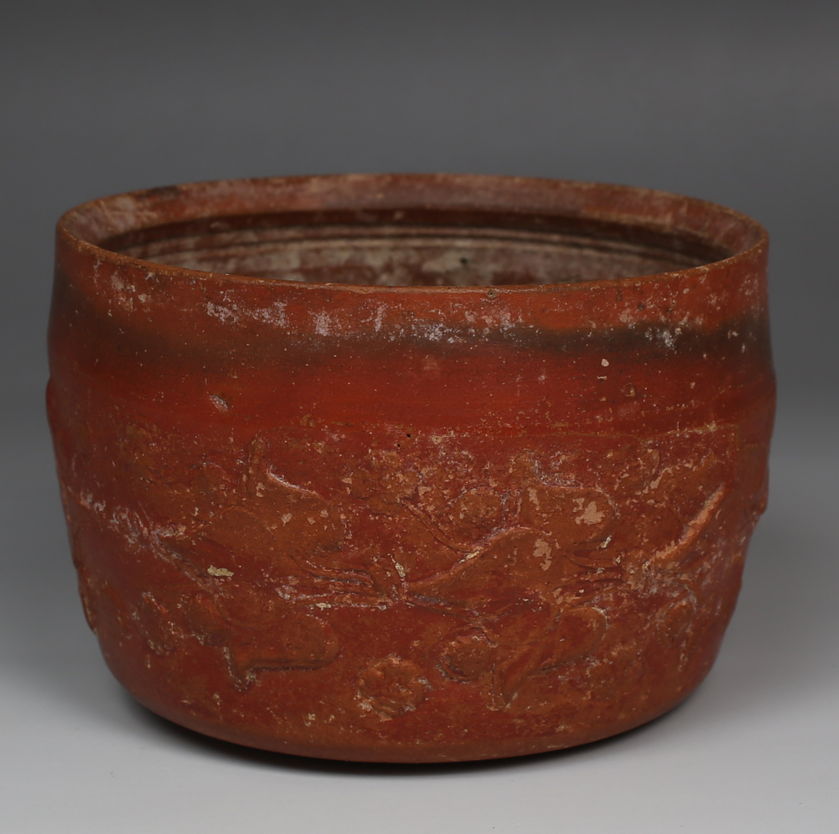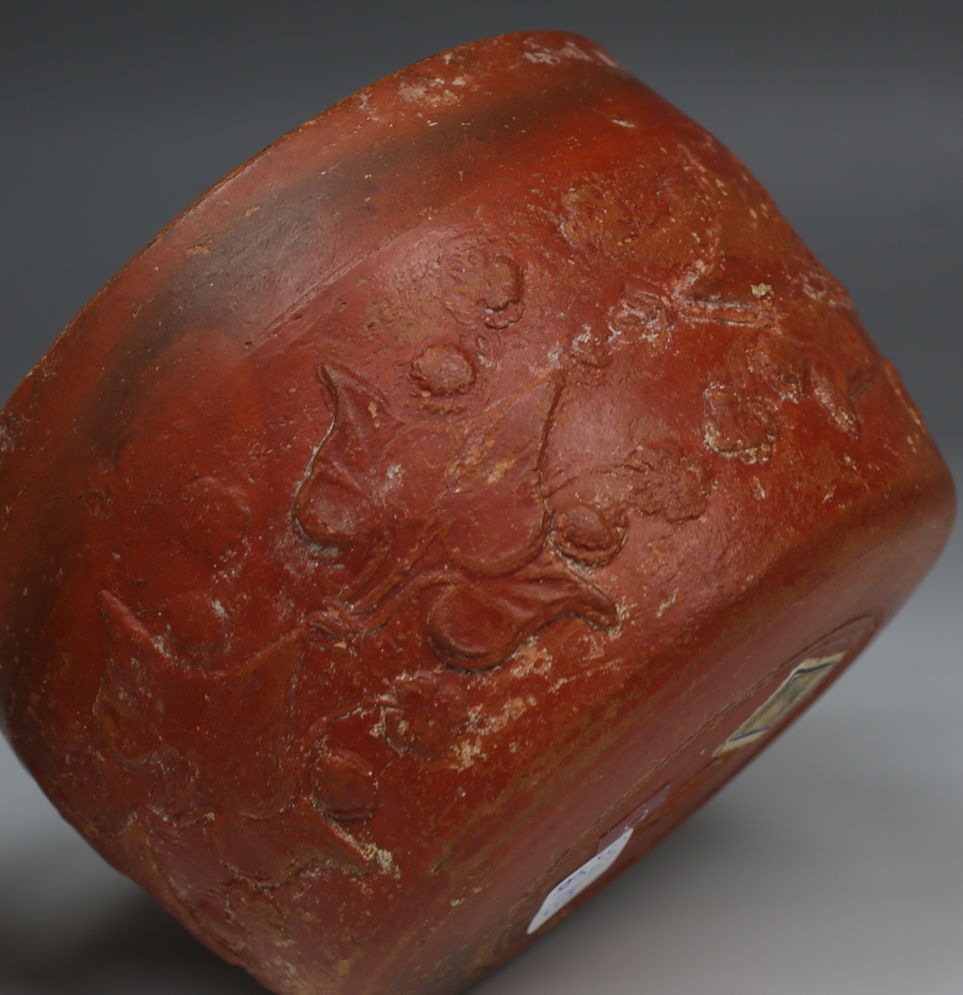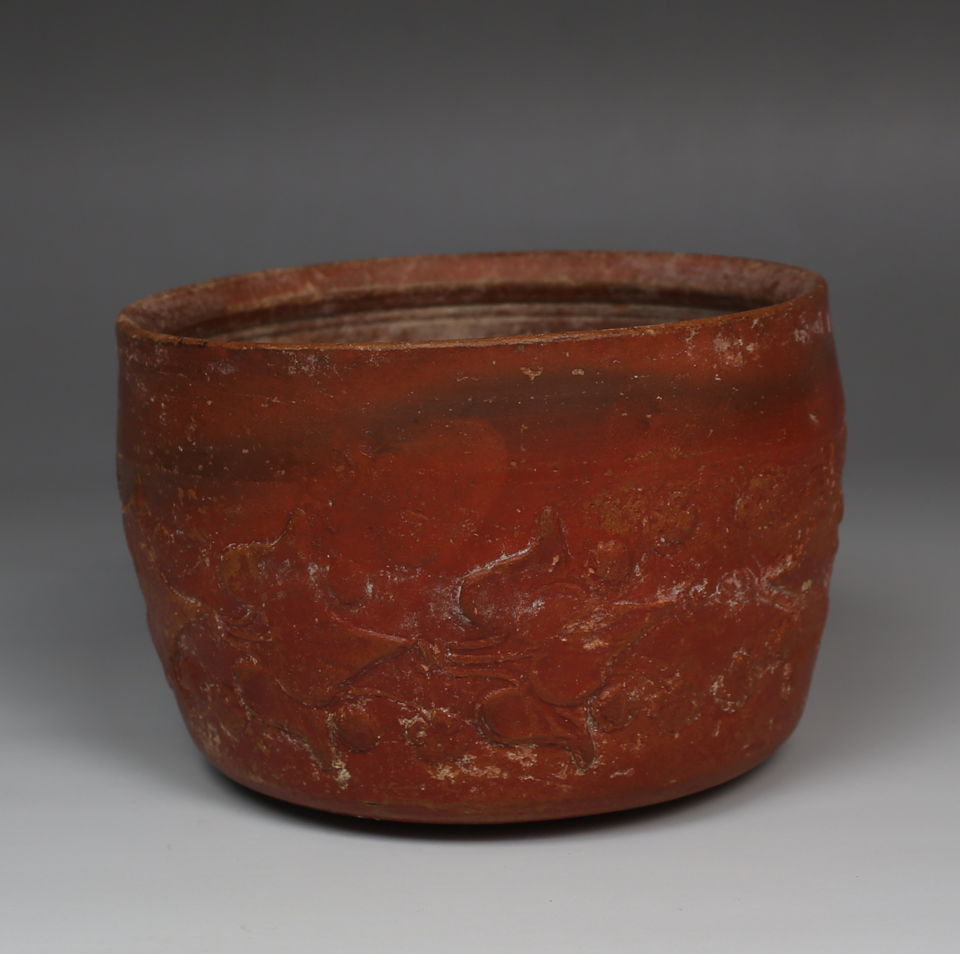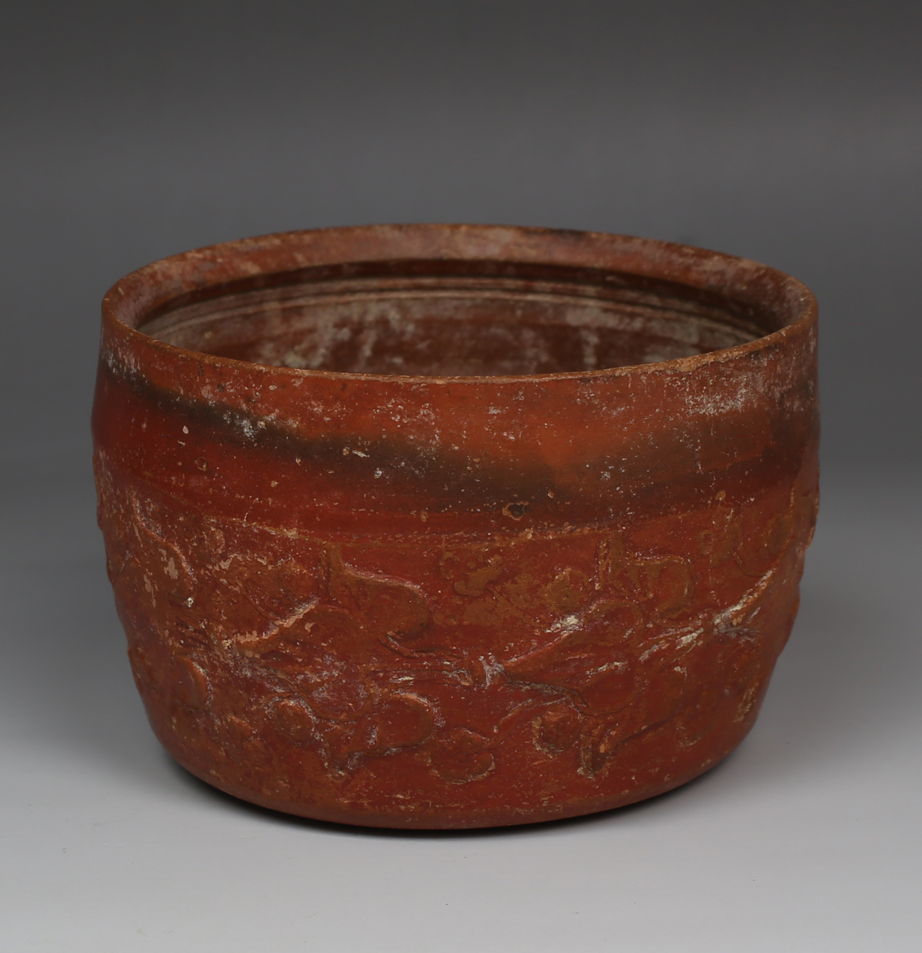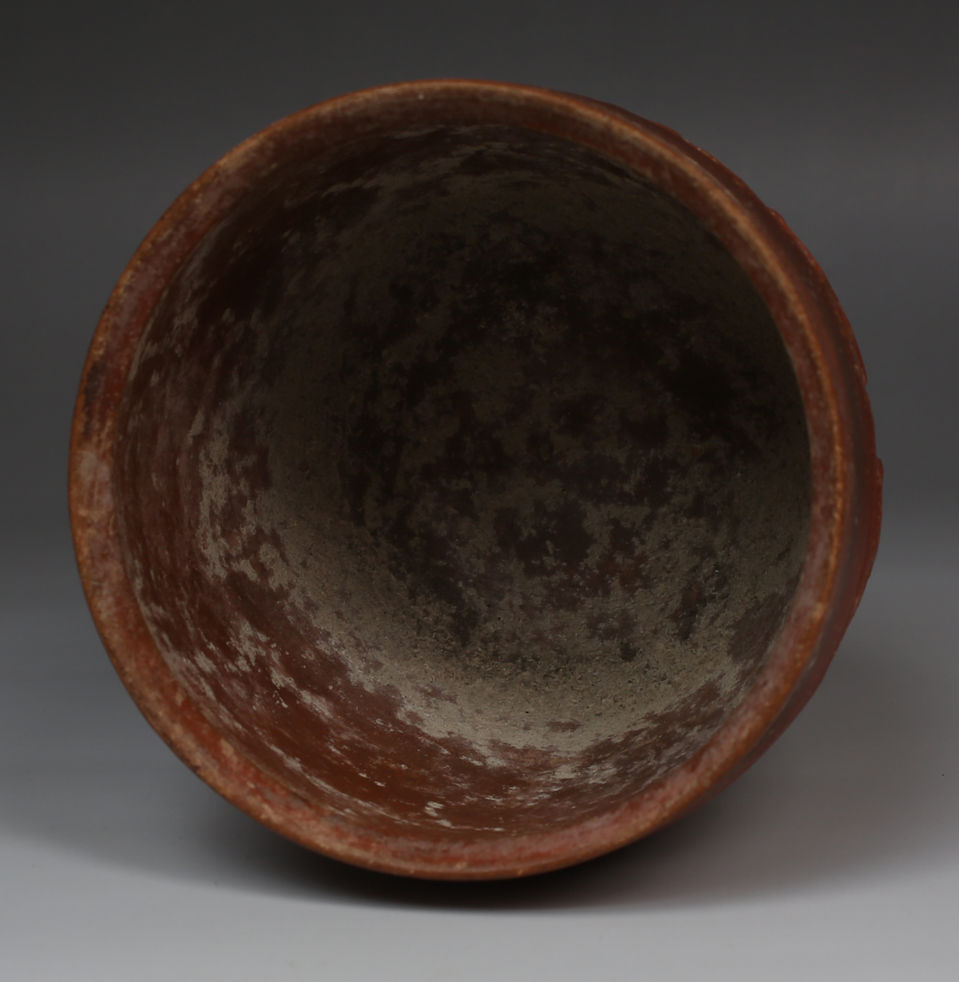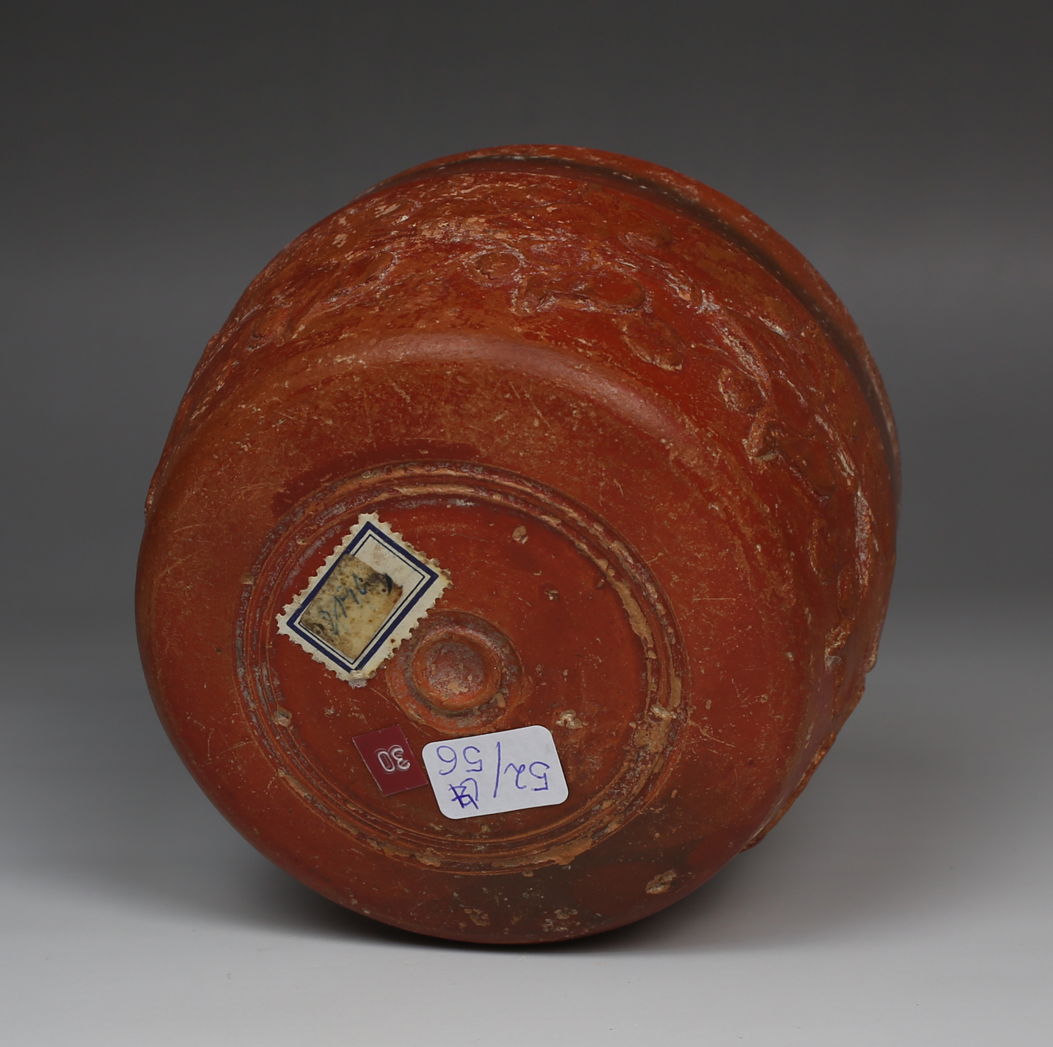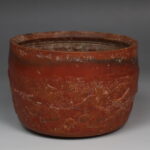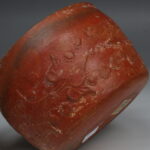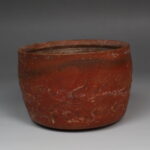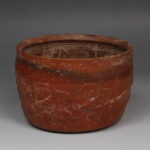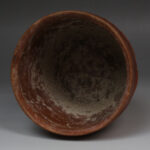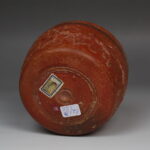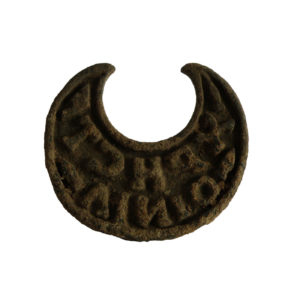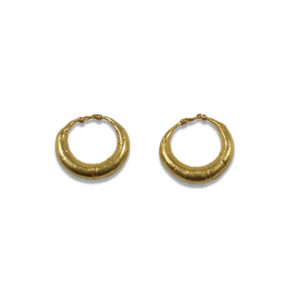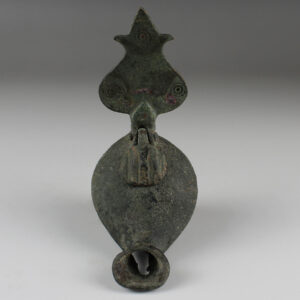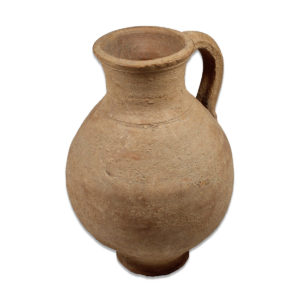Description
| ITEM | Bowl with floral decoration |
| MATERIAL | Terra Sigillata |
| CULTURE | Roman |
| PERIOD | 2nd – 3rd Century A.D |
| DIMENSIONS | 70 mm x 104 mm diameter |
| CONDITION | Good condition |
| PROVENANCE | Ex Dutch private collection, acquired between 1980 – 1990 |
Terra sigillata, also known as stamped or sigillata ware, was a popular form of fine red pottery produced from the late Republican period through the early Roman Empire. These vessels were distinguished by their smooth, glossy surfaces and often featured elaborate decorations. Floral motifs were among the most common and favored designs, reflecting both aesthetic preferences and symbolic meanings. The floral patterns, which could include stylized flowers, leaves, and vines, were often impressed or stamped into the clay before firing, showcasing the skill of Roman potters and their attention to detail.
The use of floral decoration on terra sigillata vessels was not merely ornamental but also carried symbolic significance. Flowers and plants were associated with fertility, abundance, and natural beauty, which were important themes in Roman culture. The decorative elements on these vessels could also signify the owner’s social status, as high-quality terra sigillata was often used in affluent households and during banquets. The elegance and artistry of the floral designs contributed to the overall aesthetic appeal of the vessels, making them highly prized for both their functional and decorative qualities. They were used in various settings, including domestic dining, religious rituals, and public feasts, reflecting the integration of art into daily Roman life.
The production of terra sigillata vessels with floral decoration also highlights the advanced techniques and trade practices of Roman pottery. The vessels were manufactured in several key production centers across the Roman Empire, including regions in Italy, Gaul, and the eastern provinces. These centers were known for their distinctive styles and quality, which influenced the spread and popularity of terra sigillata ware throughout the empire. The floral motifs on these vessels were not only a testament to Roman artistic sensibilities but also played a role in the broader trade networks that distributed these goods across vast distances.


